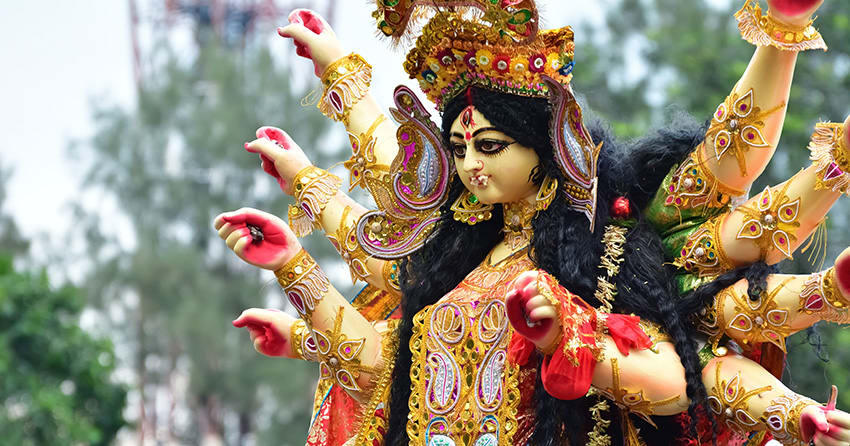Durga Puja Globally

Mythology says that to defeat evil Ravan, Lord Ram invoked Goddess Durga to seek her blessings. This untimely worship in autumn has become today the most widespread community festival in the world.
The first worship of Goddess Durga in recorded history was reportedly organized in the late 1500s by the landlords of Dinajpur and Malda in Bengal. This was a private worship. Community Durga puja was organized first in 1790 by 12 friends of Guptipara in Hoogly town in Bengal, who collected contributions from local residents to conduct the Durga puja. This was called the 'baroyari' puja or the 'twelve-friend' puja. From a 12 –friend puja, it became “sarbojanin” or all-public puja in 1910. The same year it came to Delhi from Bengal and the Kashmere Gate was its venue.
The puja also soon got identified with the freedom movement as Durga was considered to be the shakti (power) to help fight the British rule.
It was also not to be forgotten that Bankim Chandra Chattopadhyaya in his book Anandamath referes to the Sanyasi rebellion and in our national song Bande Mataram cites Durga as the goddess holding ten weapons to fight and rid the country of the evil forces.
From Bengal, the Durga puja, besides Delhi, spread to other parts of India, to neighbouring countries and soon to all parts of the globe. This has since become a truly global festival and from being essentially a religious function, it has become the biggest socio-cultural festival. It is no longer simply a Bengali or Hindu festival but an all- community festival. It is also an occasion to exhibit talents in art and culture.
The first Durga puja abroad was held in London in early 1960s. Today, it is held in all the five continents, from South Africa to Australia and New Zealand, to Latin America, North America, and Europe as well as West Asia, Southeast Asia, Japan, as also China. Even in former socialist countries like Russia Durga puja is held since 1969.
In Northern Europe where few Indians live, the Durga puja is observed in the Netherlands, Denmark, Norway, Sweden, and Finland and even in Greenland. It is held almost in all countries in Central and south Europe, and in the United Kingdom – England, Wales, Scotland and Ireland. In London, it is a big festival.
In West Asia the puja is held in Abu Dhabi since 1985, and it soon followed in Kuwait, Bahrain, Oman, and in Egypt. In Southeast Asia, Philippines, Indonesia, Singapore, and Fiji are the main countries where the puja is celebrated. Even in Africa, Durga puja is celebrated in South Africa, Kenya and Tanzania; in West Indies – Dominican Republic, Guiana, Trinidad, and in South America, it was celebrated for the first time in Brazil in 2011 and in Mexico 2012.
In several cities of Europe and USA, Durga Puja used to be observed on weekends due to work compulsions. But expatriates now take leave and devote themselves to the festival and prepare for cultural functions including dramas, songs, art competition etc., over several weeks
There used to be a dearth of priests to conduct the puja. I remember in the 60s in our Berlin puja we used to get an Engineer from Frankfurt to do the worship. Now of course priests are brought from India and in some cities there are mandirs (temples) and priests are more easily available. Another difficulty used to be the absence of dhak or the typical drum used for Durga puja typical, an essential part of the celebration. I read somewhere that in Nairobi, African drums were initially used to supplement the dhak.
Indian food and prasad from the puja are other attractions in these community festivals. In all these celebrations, not only Bengalis, but many expatriates turn up and contribute financially and otherwise. Those belonging to other parts of India who did not observe the Bengali Durga puja but celebrated Maa Sherewali or Shakti in other forms in India also join in. There are also participants from other nationalities who come to these public celebrations to enjoy not only the Durga puja but also to partake the Indian food and enjoy cultural performances. This is one celebration that is truly global and cuts across all racial differentiations.
